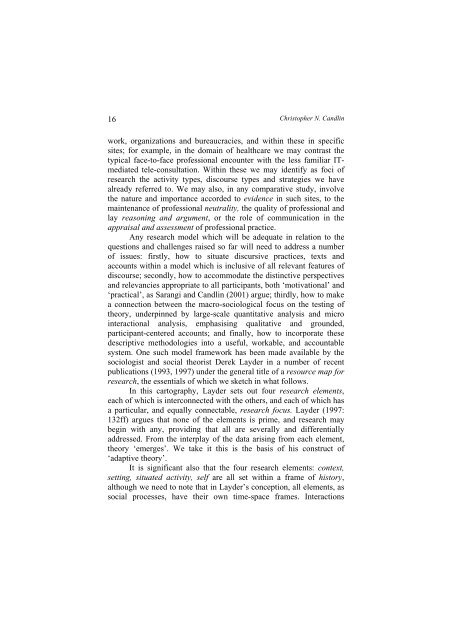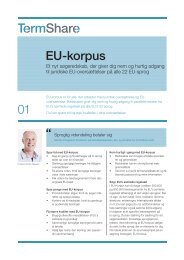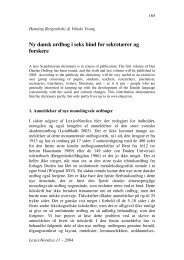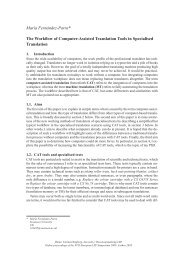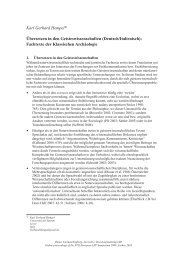Accounting for Interdiscursivity: Challenges to Professional Expertise
Accounting for Interdiscursivity: Challenges to Professional Expertise
Accounting for Interdiscursivity: Challenges to Professional Expertise
You also want an ePaper? Increase the reach of your titles
YUMPU automatically turns print PDFs into web optimized ePapers that Google loves.
16<br />
Chris<strong>to</strong>pher N. Candlin<br />
work, organizations and bureaucracies, and within these in specific<br />
sites; <strong>for</strong> example, in the domain of healthcare we may contrast the<br />
typical face-<strong>to</strong>-face professional encounter with the less familiar ITmediated<br />
tele-consultation. Within these we may identify as foci of<br />
research the activity types, discourse types and strategies we have<br />
already referred <strong>to</strong>. We may also, in any comparative study, involve<br />
the nature and importance accorded <strong>to</strong> evidence in such sites, <strong>to</strong> the<br />
maintenance of professional neutrality, the quality of professional and<br />
lay reasoning and argument, or the role of communication in the<br />
appraisal and assessment of professional practice.<br />
Any research model which will be adequate in relation <strong>to</strong> the<br />
questions and challenges raised so far will need <strong>to</strong> address a number<br />
of issues: firstly, how <strong>to</strong> situate discursive practices, texts and<br />
accounts within a model which is inclusive of all relevant features of<br />
discourse; secondly, how <strong>to</strong> accommodate the distinctive perspectives<br />
and relevancies appropriate <strong>to</strong> all participants, both ‘motivational’ and<br />
‘practical’, as Sarangi and Candlin (2001) argue; thirdly, how <strong>to</strong> make<br />
a connection between the macro-sociological focus on the testing of<br />
theory, underpinned by large-scale quantitative analysis and micro<br />
interactional analysis, emphasising qualitative and grounded,<br />
participant-centered accounts; and finally, how <strong>to</strong> incorporate these<br />
descriptive methodologies in<strong>to</strong> a useful, workable, and accountable<br />
system. One such model framework has been made available by the<br />
sociologist and social theorist Derek Layder in a number of recent<br />
publications (1993, 1997) under the general title of a resource map <strong>for</strong><br />
research, the essentials of which we sketch in what follows.<br />
In this car<strong>to</strong>graphy, Layder sets out four research elements,<br />
each of which is interconnected with the others, and each of which has<br />
a particular, and equally connectable, research focus. Layder (1997:<br />
132ff) argues that none of the elements is prime, and research may<br />
begin with any, providing that all are severally and differentially<br />
addressed. From the interplay of the data arising from each element,<br />
theory ‘emerges’. We take it this is the basis of his construct of<br />
‘adaptive theory’.<br />
It is significant also that the four research elements: context,<br />
setting, situated activity, self are all set within a frame of his<strong>to</strong>ry,<br />
although we need <strong>to</strong> note that in Layder’s conception, all elements, as<br />
social processes, have their own time-space frames. Interactions


